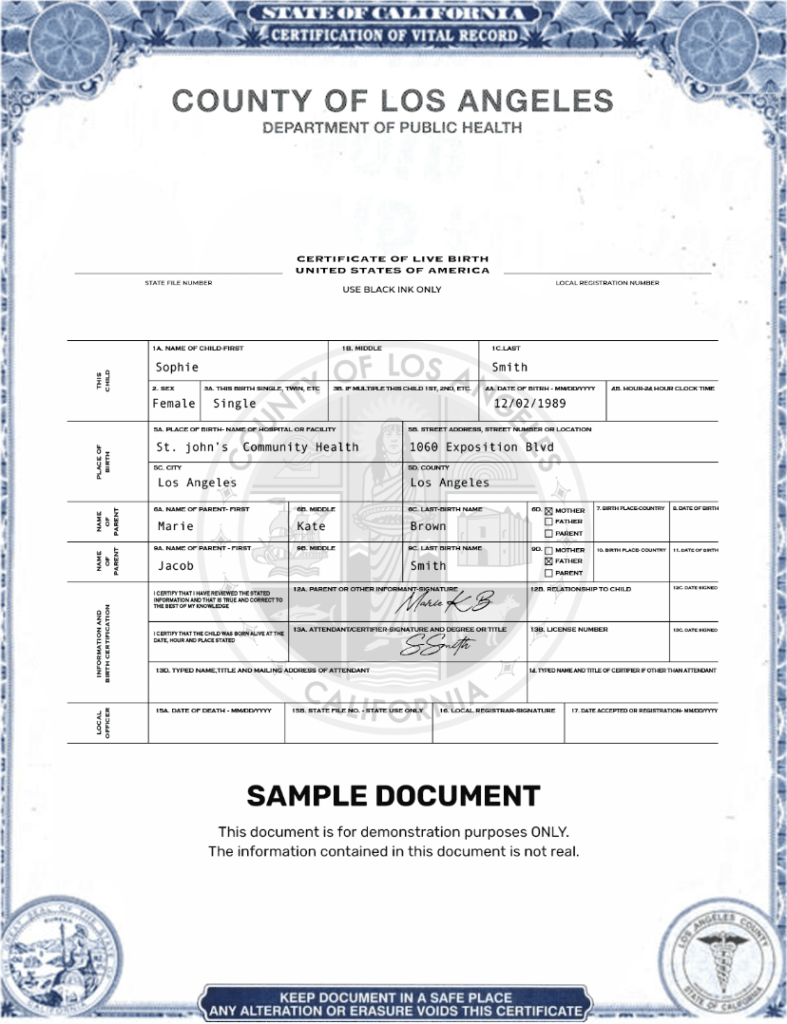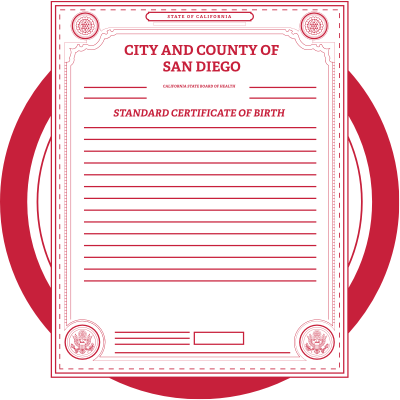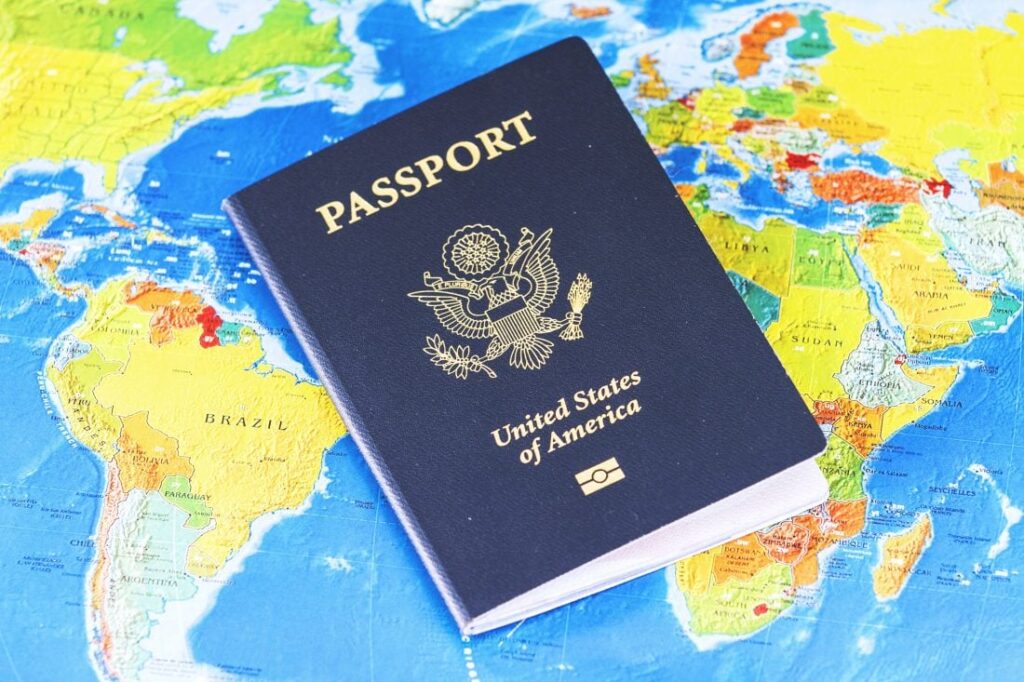If you’ve ever found yourself wondering whether your American birth certificate is sufficient to cross the border, you’re not alone. The topic of documentation required for international travel can be confusing, but fear not! This article will provide you with all the information you need to know about using your American birth certificate as a valid form of identification when crossing borders. So, before you embark on your next adventure, read on to uncover the answers to this all-important question: can I cross the border with my American birth certificate?

This image is property of www.usbirthcertificates.com.
Types of Identification Required for Border Crossings
When crossing a border, it is essential to have the proper identification. Different forms of identification are accepted depending on the country and specific border crossing you plan to use. Here are the types of identification commonly required for border crossings:
Passport
A passport is the most universally accepted form of identification for crossing borders. It is an official government document that verifies your identity and citizenship. If you have a valid passport, you can use it to cross borders without any issues.
Enhanced Driver’s License
Some countries, such as the United States, offer enhanced driver’s licenses (EDLs) that meet the requirements for border crossings. These licenses have additional security features and are accepted as a valid form of identification for land and sea travel between certain countries.
NEXUS Card
The NEXUS card is a trusted traveler program card issued by the U.S. and Canadian governments. It is specifically designed for travel between the U.S. and Canada and can be used as a form of identification when crossing the border.
SENTRI Card
The SENTRI card is another trusted traveler program card issued by the U.S. government. It is primarily used for land travel between the U.S. and Mexico and can serve as an accepted form of identification for border crossings.
FAST Card
The FAST card is a trusted traveler program card issued by the U.S. government. It is specifically designed for commercial truck drivers who frequently cross the U.S.-Canada and U.S.-Mexico borders. While primarily used for business purposes, it can also be used as a form of identification for personal travel.
Military Identification Card
If you are an active-duty member of the military, you can use your military identification card as a valid form of identification for crossing borders. This applies to both domestic and international travel.
Native American Tribal Photo Identification Card
For individuals who are members of Native American tribes, a tribal photo identification card can be used as a form of identification when crossing borders. These cards are issued by recognized Native American tribes and are valid for certain border crossings.
Other Accepted Forms of Identification
Some countries and specific border crossings may accept other forms of identification, such as state-issued identification cards, residency cards, or visas. It is essential to check the specific requirements for your intended border crossing before traveling.
Birth Certificate
While a birth certificate is not typically the preferred form of identification for border crossings, it may be accepted in certain situations. However, using a birth certificate for border crossing can present challenges, which we will discuss later in this article.
Birth Certificate Requirements for Border Crossing
Purpose of Birth Certificate
A birth certificate is an official document issued by the government that provides proof of one’s birth date, place of birth, and parentage. It is commonly used to establish citizenship, obtain identification documents, and access various services. While a birth certificate is a vital document, its acceptability as a standalone form of identification for border crossings may vary.
Acceptable Birth Certificates for Border Crossing
When it comes to using a birth certificate for border crossing, not all birth certificates are created equal. Some countries may only accept birth certificates issued by specific authorities or within a certain timeframe. It is crucial to ensure that your birth certificate meets the requirements of the country you intend to visit before relying on it as a form of identification.
Requirements for Birth Certificates at the Border
Even if your birth certificate is deemed acceptable for border crossing, there may be additional requirements you need to fulfill. These requirements can include having an original copy of your birth certificate, ensuring it is legible and in good condition, and presenting additional supporting documentation if requested.
Translation of Birth Certificate
If your birth certificate is not in the official language of the country you are visiting, you may need to have it translated by a certified translator. The translated version should be submitted along with the original birth certificate to establish its authenticity and ensure it meets the language requirements of the border authorities.
Validity of Birth Certificates for Border Crossing
Birth certificates are typically considered valid throughout a person’s lifetime. However, some countries may have additional requirements or restrictions regarding the validity of birth certificates for border crossings. It is important to research and confirm the specific validity requirements for your intended destination to avoid any complications.
Possible Challenges with Using a Birth Certificate for Border Crossing
While a birth certificate can be used for border crossing in certain situations, it may pose some challenges compared to other forms of identification. These challenges include:
Inadequate Identification
Depending on the country and border crossing, using a birth certificate as identification may not be sufficient. Some countries may require additional forms of identification or may only accept specific documents, such as passports or enhanced driver’s licenses. Relying solely on a birth certificate may result in denial of entry or delays at the border.
Identity Verification Issues
Unlike more secure forms of identification, such as passports or biometric ID cards, birth certificates can be easier to fake or forge. Border authorities may scrutinize birth certificates more thoroughly, leading to additional questions or identity verification procedures. This can potentially cause delays and inconvenience during the border crossing process.
Potential Delays and Inconveniences
Using a birth certificate as a form of identification for border crossing can lead to potential delays and inconveniences compared to using more widely accepted identification documents. Border authorities may need to verify the authenticity of the birth certificate or consult with supervisors, resulting in longer processing times. It is important to factor in these potential delays when planning your travels.
Alternatives to Using a Birth Certificate for Border Crossing
If you anticipate challenges or uncertainties associated with using a birth certificate for border crossing, there are alternative forms of identification that may be more widely accepted. These alternatives include:
Obtaining a Passport
A passport is the most universally accepted form of identification for border crossings. If you do not already have a passport, obtaining one can provide a more reliable and convenient means of crossing borders. Passports are widely recognized, securely issued, and accepted in most countries.
Obtaining an Enhanced Driver’s License
Enhanced driver’s licenses (EDLs) are available in select countries and meet the requirements for border crossings. If you reside in a country that offers EDLs, applying for one can provide you with a secure and accepted form of identification specifically designed for travel purposes.
Obtaining a NEXUS Card
The NEXUS card is a trusted traveler program card issued by the U.S. and Canadian governments. It allows for expedited processing at border crossings between the two countries and serves as a recognized form of identification. If you frequently travel between the U.S. and Canada, obtaining a NEXUS card may be beneficial.
Obtaining a SENTRI Card
Similar to the NEXUS card, the SENTRI card is a trusted traveler program card issued by the U.S. government. It is primarily used for land travel between the U.S. and Mexico and can serve as an accepted form of identification for border crossings.
Obtaining a FAST Card
The FAST card is a trusted traveler program card issued by the U.S. government for commercial truck drivers. While primarily used for business purposes, it can also be used as a form of identification for personal travel between the U.S., Canada, and Mexico.
Using a Military Identification Card
If you are an active-duty member of the military, you can use your military identification card as a valid form of identification for crossing borders. This applies to both domestic and international travel.
Using a Native American Tribal Photo Identification Card
For individuals who are members of Native American tribes, a tribal photo identification card can be used as a form of identification when crossing borders. These cards are issued by recognized Native American tribes and are valid for certain border crossings.
Other Acceptable Alternative Identification
In addition to the aforementioned options, some countries and specific border crossings may accept other forms of identification, such as state-issued identification cards, residency cards, or visas. It is important to check the specific requirements for your intended border crossing and explore alternative identification options available to you.

This image is property of www.cruzely.com.
Requirements for Minors Crossing the Border
When minors (individuals under the age of 18) are crossing a border, there are additional requirements and considerations to keep in mind. These include:
Birth Certificate Requirements for Minors
Minors crossing the border will generally be required to present a valid birth certificate as proof of their age and identity. The birth certificate should meet the same requirements mentioned earlier, including authentication, translation if necessary, and adherence to any validity restrictions imposed by the country being visited.
Accompanying Adults Documentation
Minors must be accompanied by a responsible adult who can verify their relationship to the minor and provide appropriate documentation. This may include a parent, legal guardian, or authorized adult, and they may be required to present identification documents, such as a passport or state-issued ID, along with the minor’s birth certificate.
Consent Letters
In situations where a minor is traveling with only one parent, legal guardian, or authorized adult, a consent letter may be required. This letter is a written statement from the absent parent or legal guardian giving permission for the minor to cross the border. It should include contact information for the absent parent/legal guardian and details of the trip, including destination, duration, and purpose.
Exceptions for Minors
Certain circumstances may exempt minors from some of the usual documentation requirements. For example, in the case of family emergencies or urgent medical needs, border authorities may exercise discretion and allow entry without the typical documentation. However, it is crucial to consult with border authorities or immigration officials beforehand to understand the specific requirements and any possible exemptions.
Special Considerations for Traveling by Sea or Air
When crossing a border by sea or air, there are additional considerations and requirements that may apply. These include:
Birth Certificate Requirements for Sea Travel
When traveling internationally by sea, birth certificates may be required as part of the documentation process. However, the specific requirements can vary depending on the cruise line, destination, and cruise itinerary. It is essential to consult with the cruise line and research the specific requirements for your intended sea travel to ensure compliance.
Birth Certificate Requirements for Air Travel
When traveling internationally by air, birth certificates may not typically be accepted as a standalone form of identification. Air travel often requires a passport or other internationally recognized identification documents. It is important to obtain the appropriate identification documents, such as a passport, when planning international air travel.
Additional Identification Requirements for Sea or Air Travel
In addition to birth certificates or other identification documents, cruise lines and airlines may require additional forms of identification or travel documents. These can include passports, visas, or travel authorization forms, depending on the destination and specific travel requirements. Checking with the cruise line or airline beforehand is crucial to ensure compliance and avoid any last-minute complications.

This image is property of www.smartbordercoalition.com.
Specific Border Crossing Requirements by Country
Different countries have varying border crossing requirements, even within the same continent. Here are specific border crossing requirements for two neighboring countries:
Canada
When crossing the border between the United States and Canada, the most widely accepted form of identification is a passport. However, Canada also recognizes the use of NEXUS cards, enhanced driver’s licenses (EDLs), and other trusted traveler program cards. Birth certificates may be accepted in conjunction with additional identification, such as a driver’s license or residency card. It is crucial to check the specific requirements for the border crossing you plan to use, as Canadian immigration policies can change.
Mexico
When crossing the border between the United States and Mexico, a valid passport is the most widely recognized and accepted form of identification. Mexican immigration authorities do not generally accept birth certificates as standalone identification. However, for minors under the age of 16, a birth certificate may be accepted when accompanied by additional documents, such as a parent’s passport or driver’s license. It is essential to consult with Mexican immigration authorities or check the latest requirements to ensure compliance before crossing the border.
Changes in Border Crossing Requirements
Border crossing requirements can change over time due to various factors, including changes in security protocols, international relations, or government policies. It is important to stay informed about any changes that may affect your planned border crossings. Here are two significant factors that can impact border crossing requirements:
Changes due to COVID-19
The COVID-19 pandemic has significantly impacted international travel and border crossing protocols. Many countries have introduced additional health and safety measures, including requirements for COVID-19 tests, quarantine periods, and proof of vaccination. These requirements are subject to change, and it is crucial to check the latest guidelines and restrictions before crossing any borders.
Future Changes
Even outside of extraordinary circumstances like a pandemic, border crossing requirements can change to enhance security or streamline processes. It is always advisable to stay updated with the latest information from relevant government authorities, border agencies, or trusted travel resources to ensure compliance with any changes or new requirements.

This image is property of cdn-static.passportsandvisas.com.
Conclusion
When planning to cross a border, it is crucial to have the proper identification documents to ensure a smooth and hassle-free travel experience. While a birth certificate can be accepted as a form of identification for border crossing in some cases, it may present challenges compared to other widely recognized identification documents like passports or trusted traveler program cards. It is important to consider the specific requirements of the country and border crossing you plan to use and explore alternative identification options if necessary. Staying informed about any changes in border crossing requirements, including those related to COVID-19 or future policy changes, is essential to avoid any last-minute complications during your travels. By understanding the different types of identification, requirements, and potential challenges associated with border crossings, you can better prepare yourself and enjoy a seamless journey across international borders.
Didn't find what you were looking for? Search here
